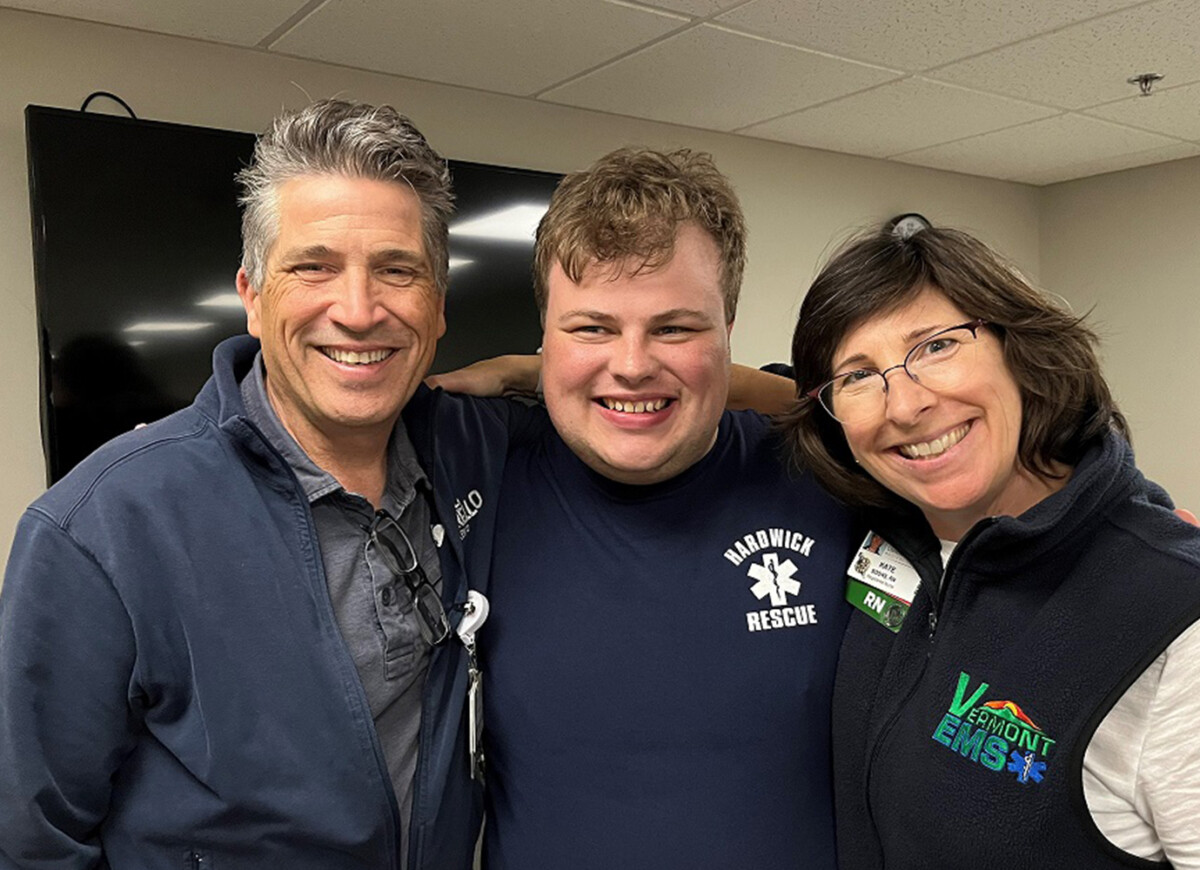Pediatric Emergency Medicine Team Shares Knowledge Across Vermont

David Nelson, MD, and Registered Nurse Kate Soons, MSN, RN, CCRN, share a common desire – making sure children receive the best possible care in the field and the safest transport possible to a hospital when necessary. When they’re together and discussing the work they do, a raw passion is on full display – and it’s hard to keep up with them.
“We both have about 20 squirrels that live in our brains, which is probably why we work well together,” Soons said.
Nelson, a pediatric emergency medicine physician, and Soons, an EMS educator and nurse educator in the pediatric intensive care unit, are based at the University of Vermont Children’s Hospital. They have been hosting virtual gatherings for colleagues through the Vermont EMS for Children Program since the outset of the COVID-19 pandemic. The online meetings are reaching far beyond the UVM Health Network and helping EMS providers across the state gain the skills and knowledge necessary to properly treat and transport children – a task that is often more complicated than caring for adults.
“It’s hard to get proficient at something when you don’t see it, and it’s not only proficiency,” Nelson said. “It is scary as Hell to go on a call when you feel like, ‘Uh, I’m not quite sure what to do.’”
Only about 5% of the EMS calls in Vermont are for pediatric emergencies, while the national average is around 10%. So gaining real-world experience in providing interventions for children is challenging for the mostly-volunteer paramedics and emergency medical technicians across Vermont.
For an EMS provider to be really good at this, it’s hard. We want to provide opportunities for them to be more exposed to an experience that one of their colleagues has had, like vicarious learning and storytelling, because it’s a lot.
Registered Nurse Kate Soons, MSN, RN, CCRN
Nelson and Soons, recognizing the need, created Pedi2Go, a program that trains and helps to equip EMS services to provide the specialized care children need in the field. The goals of the program are to:
- Identify a Pediatric Emergency Care Coordinator (PECC) for every hospital emergency department (ED) & Vermont EMS District.
- Provide pediatric-specific training materials to support ongoing EMS education and pediatric skills checking.
- Provide access to evidence-based pediatric-specific education including disaster preparedness.
A big part of the program is facilitating regional clinical simulation sessions that train local instructors. So far, Nelson and Soons have worked with hundreds of paramedics and EMTs around the state, including 75 percent of the agencies, using real calls to educate colleagues.
“If it was [an agency outside of UVM Health Network], we say, ‘Hey, you know that call you had, you know, you did a great job. Can you share that with everyone?’” Nelson said. “So we call them on and they start walking through it. And so by the end of a case, everyone can feel like they’ve experienced it, and they’ve learned from it.”
As the only tertiary care hospital for Vermont and northern New York, the UVM Medical Center and Children’s Hospital is a critical component to providing care for seriously sick or injured children. When they arrive at the hospital, it’s the job of Nelson and Soons to treat them. But the care they provide can be limited if children are not able to receive emergency care in the field. That’s what drives them to work beyond the hospital’s walls.
Another passion of mine is education, including everyone from EMT’s or pre-hospital providers to med students, nurses, residents, everybody.
David Nelson, MD
It’s similar for Soons, who’s worked at the hospital for 31 years, including 15 as a nurse.
“Ultimately, getting our patients from the scene to the Community Hospital, to the tertiary care Children’s Hospital in good shape is meaningful,” she said.
With Pedi2Go up and running, Nelson and Soons will continue their efforts to educate and equip EMS providers, with the ultimate goal of delivering the best care and outcomes to children when they arrive at the UVM Children’s Hospital.
“The big vision is in each one of our 13 medical districts, to put the people together who take care of kids, and that’s EMS, the pediatricians and family practitioners, the local emergency department, and have them be able to know each other, work together, train together,” Soons said.
